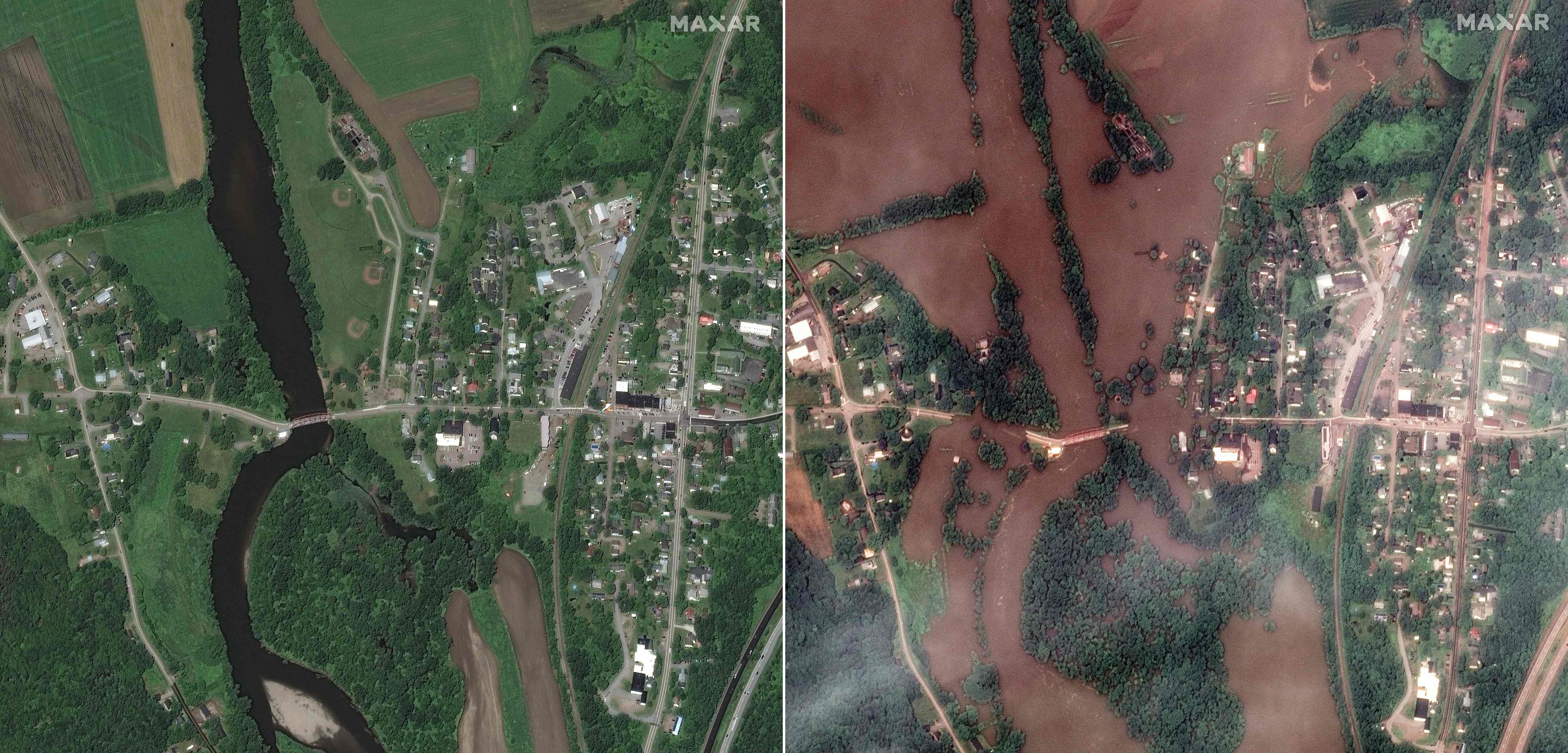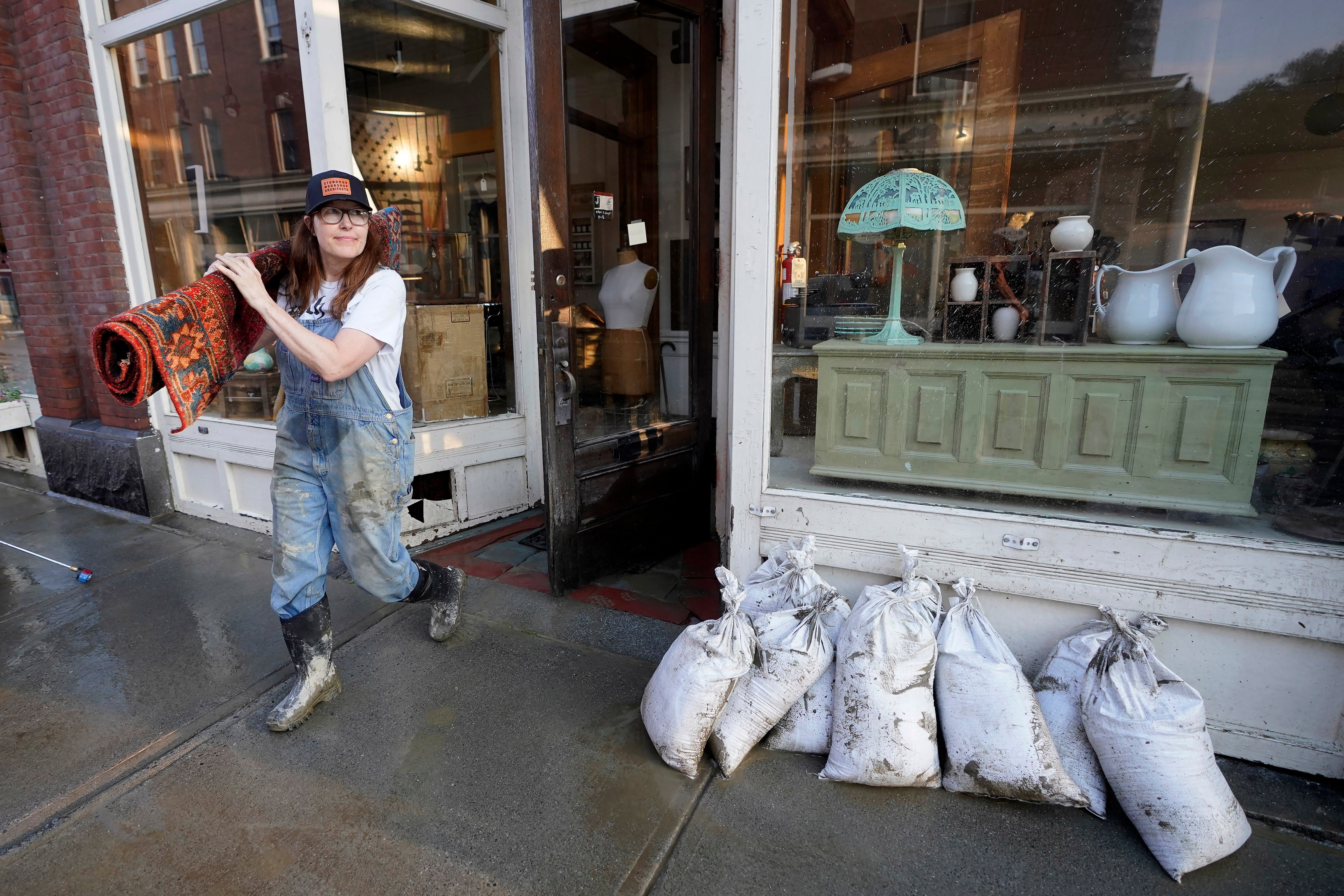Vermont’s catastrophic flooding is visible from space
Authorities warned residents to beware of potential sinkholes as flood waters recede and saturated ground settles
Vermont is beginning the long and gruelling clean-up from catastrophic flooding this week – the scale of which is so vast that it can be seen from space.
The Green Mountain State wasn’t alone: other Northeastern states are facing their own expensive recoveries from major, slow-moving storms which dumped months of rain on the region in a matter of days.
“Make no mistake, the devastation and flooding we’re experiencing across Vermont is historic and catastrophic,” said Vermont Governor Phil Scott, who appeared on Wednesday at a briefing alongside state congressional leaders including Senator Bernie Sanders.
The governor noted that Vermont has recently completed the final infrastructure repair job from 2011’s deadly Tropical Storm Irene when it was hit with flooding this week. And unlike Irene, which lasted around 24 hours, the downpours have gone on for days, Gov Scott said.
New York Governor Kathy Hochul also declared it a “1-in-1,000-year weather event” caused by the climate crisis.
Attributing the role of the climate crisis in individual flooding events takes significant scientific analysis. However, as the planet warms, more moisture is held in the atmosphere meaning storms with the potential for a lot more rain and ensuing flash floods.
Communities in upstate New York, particularly in the Hudson Valley, have been devastated with homes destroyed, and roads and bridges washed away by torrents of water. Pamela Nugent, 43, drowned while trying to escape her home in Highland Falls with her dog.
In Vermont, more than 100 people have been evacuated in swift water rescue operations including by teams drafted in to help from North Carolina and Massachusetts. Crews were continuing to search door to door in remote, heavily impacted areas.
Large parts of the towns of Londonderry and Weston, Vermont remained largely inaccessible on Wednesday.

In the state capital, Montpelier, a dam on the city’s outskirts appeared to have stabilised after it came dangerously close to breaching.
“It looks like it won’t breach... That is one less thing we have to have on our front burner,” Montpelier Town Manager Bill Fraser said.
Business owners cleaned out destroyed merchandise and furniture on Wednesday, salvaging what they could. Residents were seen canoeing along a road in front of the state capitol building, and navigating streets on paddleboards.

Officials warned drivers to monitor closures and avoid traversing water-covered roadways. With more rainfall expected from Thursday across New England, there may be additional road closures, New England Compass said.
But the crisis is far from over, Governor Scott warned. “So I want to be clear, we are not out of the woods,” he said on Tuesday.
Authorities warned residents to beware of potential sinkholes as flood waters recede and saturated ground settles. Vermont was also advising residents in flood-effected areas to boil water due to risk of contamination from pollutants and sewage in floodwaters.
President Joe Biden, who has been in Lithuania attending the annual NATO summit, declared an emergency for Vermont and authorised the Federal Emergency Management Agency (FEMA) to help coordinate disaster relief efforts and provide assistance.
Despite heavy rainfall easing over New England, more severe weather was brewing across the US in what has been a relentless summer of extremes.
Forecasters warned on Wednesday of possible life-threatening flash flooding in parts of southern Arkansas and northern Louisiana as heavy rain battered the region.




Join our commenting forum
Join thought-provoking conversations, follow other Independent readers and see their replies
Comments